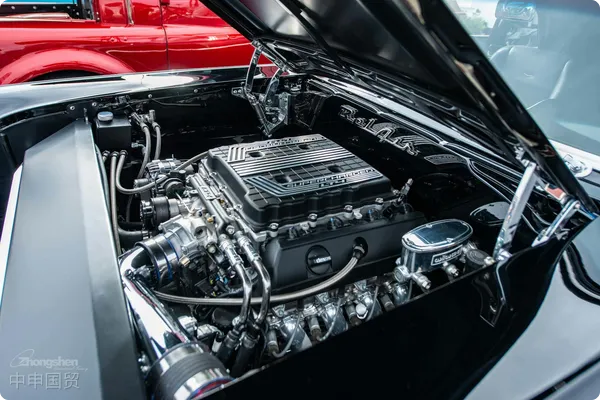- Shanghai Zhongshen International Trade Co., Ltd. - Two decades of trade agency expertise.
- Service Hotline: 139 1787 2118

——Based on 20 Yearsforeign tradeA professional perspective serving practical combat
Contents
ToggleIntroduction
With the deep integration of the global automotive industry chain, the demand for imported auto parts in China's aftermarket continues to grow. However,Automotive partsImporting involves complex customs supervision, technical standard certifications, and logistics management processes. Without professional expertise, enterprises may easily encounter customs clearance delays, cost overruns, or even legal risks. Based on 20 years of practical experience in foreign trade agency services, this article provides an in-depth analysis of automotive parts.Import RepresentationKey points of customs clearance to help enterprises complete cross-border procurement efficiently and compliantly.
I. Industry Characteristics and Challenges of Automotive Parts Import
1.The categories are complex, and the regulations are stringent.
Auto parts encompass tens of thousands of SKUs, including engine components, electronic systems, and exterior parts, with significant differences in customs classification (HS Code). For example:
- Key components(For example, the gearbox): Original manufacturer authorization and technical parameter documents must be provided;
- Aftermarket parts(For example, wheel hubs and exhaust systems): Must comply with Chinese3CCertification or Small Batch Exemption Policy;
- New energyAuto Parts(For example, battery modules): Additional submission of environmental assessment and transportation safety certification is required.
2.Strong policy dynamics
Chinese customs implements dynamic supervision on the import of auto parts, for example:
- In 2023, new import restrictions were added on accessories containing graphene materials;
- For second-hand parts exported from the EU, a "Certificate of Vehicle Recycling for Scrapping" must be provided.
3.Time-sensitive and cost-sensitive
The shutdown of an automobile production line can result in losses amounting to thousands of dollars per minute, and the efficiency of customs clearance directly impacts the stability of a company's supply chain.
II. Core Service Modules for Professional Automotive Parts Import Agency Customs Clearance
1. Preliminary compliance review
- Pre - classification of Goods: Accurately match HS codes based on the material and function of accessories to avoid fines caused by declaration errors;
- Technical document pre-review: Assist in organizingIt is recommended to verify through the following methods:, quality inspection report, 3C certification/exemption certificate;
- Early Warning of Trade BarriersFor example, aluminum fittings exported by the United States may trigger anti-dumping duties.
2. End-to-end customs clearance management
- Port-to-door one-stop service: CoversMaritime TransportationBooking, bonded warehousing, label rectification, and coordination for local inspection;
- Special Scenario Response:
- Urgent AccessoriesAir Transportation: Coordinate with the airport customs for "immediate inspection upon arrival";
- Return for Repair: Develop a "Temporary Import and Export" plan to reduce corporate tax burdens.
3. Tax Optimization and Risk Management
- Utilize the China - ASEAN Free Trade Agreement (CAFTA) to achieve zero tariffs on imported frames from Thailand;: Utilize the rules of origin under free trade agreements (such as RCEP) to reduce tax rates;
- Avoidance of Late Reporting Fees/Late Payment Fees: Optimize cash flow through the "two-step declaration" and "consolidated taxation" models.
III. Auto PartsImport ClearanceTypical Issues and Solutions
Case 1: Classification Dispute Causing Customs Clearance Delay
A company importing "Vehicle-mounted Intelligent Central Control Screens" faced customs questioning over classification (declared under heading 8528, but actually should fall under 8708). The agency successfully completed reclassification within 3 days by submitting product technical documentation and WTO classification precedents, avoiding 200,000 yuan in port demurrage losses.
Case 2: Application for 3C Certification Exemption
A modified car company imported limited-edition wheel hubs, and the agency assisted in applying for the "List of Imported Products for Special Purposes Exempt from Compulsory Certification," saving 60 days in certification time.
Case 3: Response to Anti-Dumping Duties
For aluminum engine brackets exported to the EU, the agency company recommends that clients switch to sourcing from factories in the ASEAN Free Trade Area, reducing the comprehensive tax rate from 32% to 5%.
IV. Industry Trends and Strategic Recommendations for Enterprises
1.Digital Transformation Empowerment
- Utilize AI intelligent classification system to reduce human error rate;
- Blockchain technology enables real-time sharing of customs declaration documents.
2.Construction of Supply Chain Resilience
- Establish a dual-buffer inventory system with "bonded warehouses + overseas warehouses";
- For chip-related shortage components, proactively arrange "tariff guarantee insurance" to expedite customs clearance.
3.ESG compliance requirements upgrade
- Pay attention to the impact of the EU's "Batteries and Waste Batteries Regulation" (EU 2023/1542) on the import of power batteries;
- Give priority to overseas suppliers that meet carbon footprint certification requirements.
Conclusion
The import and customs clearance agency for automotive parts is a highly specialized and meticulous task. Enterprises must rely on service providers with profound industry expertise to strategically plan a compliant supply chain system. Twenty years of experience have shown that only by deeply integrating policy interpretation, risk anticipation, and operational efficiency can companies gain a competitive edge in the fiercely contested automotive aftermarket.
Keywords: Automotive parts import, 3C certification, HS code classification, tariff planning, supply chain compliance
For customized import solutions, please contact our professional team to obtain the "Automotive Parts Import Compliance White Paper" and a one-on-one risk assessment.
Related Recommendations
? 2025. All Rights Reserved. Shanghai ICP No. 2023007705-2  PSB Record: Shanghai No.31011502009912
PSB Record: Shanghai No.31011502009912









